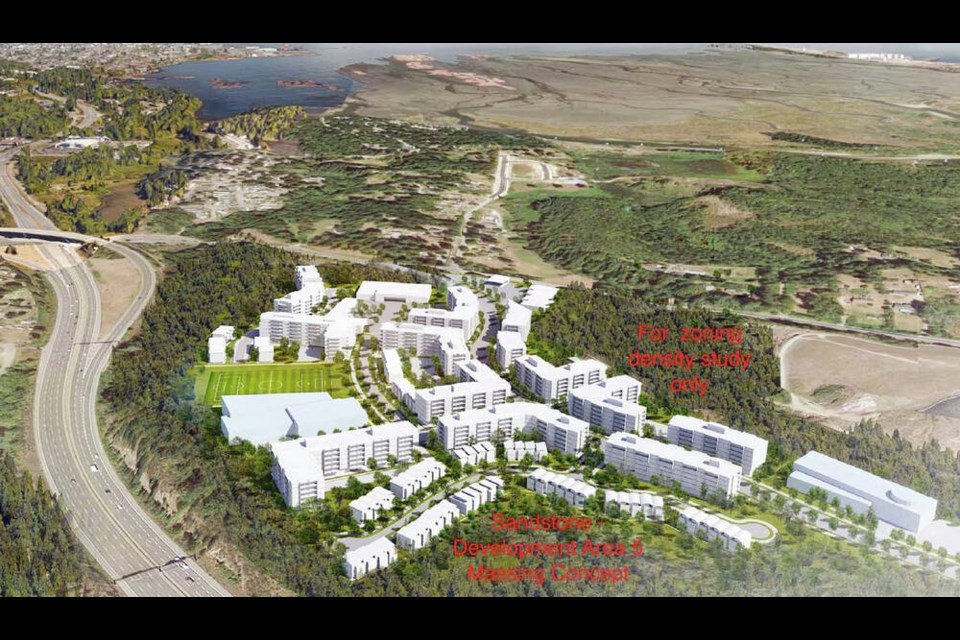Nanaimo council has given qualified support to a mixed-use development at the south end of the city described by the mayor as the “single biggest project of its kind in the history of the community.”
The Sandstone project is expected to require $2 billion in investment during a 20-year phased build-out that includes plans for more than 2,000 new homes on 726 acres.
Council members voted 7-2 Thursday in favour of a zoning bylaw to permit residential, industrial and mixed-use development in four areas. The motion was opposed by councillors Tyler Brown and Ben Geselbracht.
Fourth and final reading is on hold pending clarification from the province about whether the site’s planned single-family lots would fall under upcoming legislation requiring such lots to permit up to six units.
Council is in a “twilight zone” until the matter is sorted out, said Mayor Leonard Krog, since if multi-family units such as fourplexes and sixplexes are permitted on the lots, it would increase the cost of providing services and infrastructure.
Vancouver’s Seacliff Properties said Sandstone will create homes and employment — in commercial and industrial areas — and add community services, parks and green space to the site, which is bisected by the Trans-Canada highway, Duke Point Highway and Cedar Road.
Plans include 800 single-family lots, 500 townhouses, 900 multi-family units, 177,604 square feet of commercial space, and 1.8-million-plus square feet in industrial space, a city staff report said
The report said the development will have a strong economic and business focus, providing substantial new industrial uses and opportunities, along with new retail and commercial space.
Krog said he welcomes the industrial and commercial-retail uses. “We have a real shortage of industrial land and we need an economy. We can’t just be about housing. We need places where people can work and produce things.”
The mayor is optimistic the project will go ahead, saying the owner “has deep pockets and has made long-term commitments in similar projects.”
Earlier this year, the developer signed over 102 acres of property that held the ancient kwula’xw village to Snuneymuxw First Nation. Additional land will go to the Snuneymuxw once rezoning is complete and the nation would have an option to purchase more, the developer has said.
Opponents have expressed concern about a significant increase in traffic as Sandstone builds out. A traffic impact study showed that vehicle numbers could double or more at some key intersections during build-out.
Georgia Desjardins, Seacliff director of development, said in a letter to the city that the company is committed to spending tens of millions of dollars in mitigation efforts developed with local and provincial officials.
But Brown, who voted against the project, said he fears Sandstone “will further stretch out the city” and deliver major infrastructure challenges. He said the development proposal is 20 to 30 years too early.
“I think it will negatively impact the community building of Nanaimo similar to what occurred decades ago.”
The economy and population of Nanaimo, which now has just over 100,000 residents, grew in the years following the Second World War due to its industrial base and expansion as a regional service centre, prompting developments from the south to north of the city. Brown is concerned the Sandstone project would further contribute to the linear nature of the city’s development.
Brown said while Sandstone’s commercial and industrial components are positive, the amount of housing promised is not needed right now, and new residential units could have been incorporated in other parts of the city.
Some of the land in the Sandstone plan could have been designated as urban reserve, earmarking it for a time when Nanaimo needs to increase its housing inventory, he said.
He said plans to build single-family housing on the west side of the highway will severely strain the road network.
>>> To comment on this article, write a letter to the editor: [email protected]



